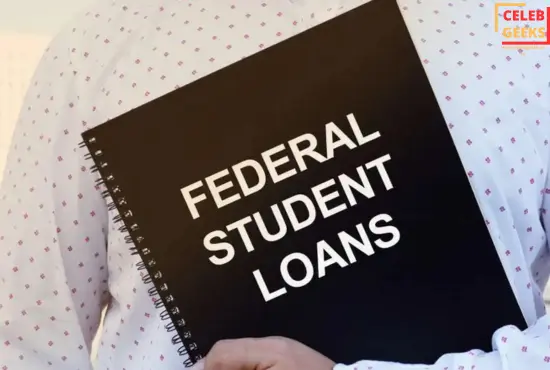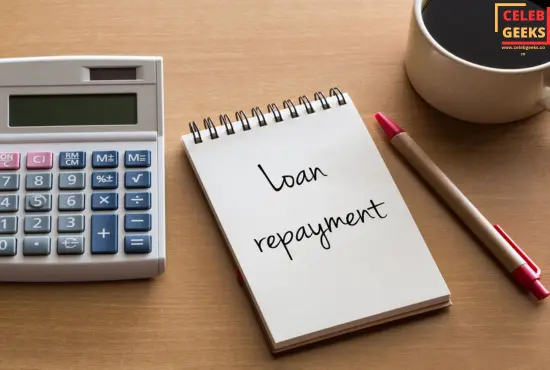Best College loans assist students to get higher education because it is a costly affair. Often, students take loans to pay their fees, living expenses, and other expenditures. Although financial aid and scholarships are available for students, usually student loans are the best choice among college-goers. here is an overview of top student loans in the market that highlights federal and private loans, their benefits, eligibility criteria, and repayment options.
Borrowing loans means paying interest every month. Selecting a low interest rate can help you save money. In that case, you can you will pay a lower amount of money for a long period. The best choice of low interest rate is a subsidized loan. The government will pay your interest rate while you study in college. Every student is not eligible for every loan. Some types of student loans are as follows:
Federal Student Loans

Students prioritize Federal student loans because they have a low interest rate and fixed terms and provide protection in the form of a repayment-based income program. Many students can apply for these loans despite much consideration of their credit score or history.
Federal Perkins Loans
While using government funds, the college gives these loans to those students who have serious financial issues and need these loans. The interest rate is pretty low which is 5 percent, and during college, you don’t have loan payments. You can take a total of $27,500.
Federal Direct Subsidized Loans
These loans are low-interest-based, and the rate charged is 3.73 percent. During your college years, the government pays interest. The rate will not increase with time because its rate is fixed. In the first year, you can take up to $3,500 to $4,500 during your second year. However, in senior year you can take up to $5,500.
Federal Direct Unsubsidized Loans
Non-need-based government loans have also a low interest rate of 3.73 percent that is fixed. They offer you to borrow more money rather than a direct subsidized loan alone. You can pay off the interest while you are in college, or you can add it to your loan’s principal. Adding it onto the principal will cost you more money over time.
Federal Direct Plus Loans
These loans are non-need-based government loans that enable parents and graduate students to take the loan fees of college and less any additional aid. Their interest rate is fixed at 6.28 percent.
Private (Alternative) and State Loans
These loans from banks, colleges, private organizations, and state government agencies are usually not need-based or subsidized. They often require good credit, meaning an adult with good credit must cosign the loan. Their interest rates are often higher than on federal loans, and the rates gradually increase with time.
Private Student Loans

Banks, credit unions, and other financial companies provide private best college loans. If your college expenses are not covered through federal loans these loans can assist you to cover the gap. They have high interest rates, and less favorable repayment terms, and are often required to be cosigned.
Sallie Mae Smart Option Student Loan
Sallie Mae is the most renowned private lenders that provide you with different types of loan options according to the needs of the students. The Smart Option Student Loan helps students to take loans for any type of undergraduate degree or a master’s or professional degree in any available school. Unlike federal loans, Sallie Mae offers low rates, but the interest rate is flexible, meaning it will change with time.
Eligibility
Currently or otherwise enrolled students who attend degree-granting institutions Credit check is required for this service.
Interest Rates
Variable or fixed interest rates with the option to start paying while still in school to be able to minimize the total costs.
Loan Limits
Funds to cover 100% of an enrolled student’s school-certified cost of attendance.
Discover Student Loans
Discover provides student loans for undergraduate, graduate, and professional student loans. Rewards programs are one of the unique features of Discovers. Students who have maintained a good GPA during the term of the loan are then eligible for awards a one-time cash reward. A credit check is mandatory, and like other private loans, the interest rate can be variable or fixed.
Eligibility
Must enroll in half-time at an eligible institution.
Interest Rates
Determine whether creditworthiness is a fixed or variable rate.
Loan Limits
It’s possible to fund up to 100% of the costs certified by the school.
Citizens Bank College Loan
Citizens Bank has several different options for undergraduate and graduate college loans. In addition to multi-year approval, meaning that students do not need to reapply each year. That saves just a little of the headache, time, and paperwork involved in applying for multiple loans during a college career.
Eligibility
It offers most students who apply to need a cosigner.
Interest Rates
Fixed/floating rates based on creditworthiness.
Loan Limits
Up to $150,000 for undergraduate students, and higher for certain graduate programs.
Loan Repayment Strategies

Paying off the best college loans can look overwhelming task, but proper planning and structuring can help one out of this perplexing mess. Different repayment methods can be offered to pay off loans sooner or to make the most of your payments:
Income-Driven Repayment Plans (Federal Loans)
The Federal loans have different plans of income-driven repayment. According to your income and house size, the sum you pay each month is adjusted. These loans are helpful for those students who have low incomes and need more time to repay their loans completely. After 20-25 years, the remaining balance is forgiven.
Loan Consolidation
Consolidate Loans helps you to combine different federal student loans with just one monthly payment. It doesn’t cut your total amount owed, but it simplifies finances and may even lower your monthly payment.
Refinancing (Private Loans)
The private loan borrower can refinance to lower his interest rates. Refinancing enables you to replace your current loan with a new one, which could hopefully offer a lower rate, saving you a large sum of money over the long term. But by refinancing federal loans into private ones, you are depriving yourself of federal protections, including income-driven repayment plans.
Extra Payments
You can make extra payments to help pay off the loan faster and reduce the total interest paid over the life of the loan. Even a few extra dollars added every month will really add up.
Frequently Asked Questions
Q1. What are the main differences between federal and private student loans?
Federal loans are fixed types that are repayable through flexible plans and do not go through credit checks, whereas private loans are creditworthiness-based and have fluctuating rates.
Q2. How do I qualify for a Direct Subsidized Loan?
The loans are need-based and require proof of financial need through the FAFSA. While you are in school, the government pays the interest.
Q3. Can I borrow more money with private loans than federal loans?
Yes, you will see that private loans can cover the full cost of attendance, though federal loans will actually have annual borrowing limits.
Q4. What happens if I can’t afford to repay my loans after graduation?
Another excellent feature of federal loans is the ability to refinance at a lower interest rate. However, private lenders cannot refinance a federal loan for an even lower interest rate by allowing them to lose the benefits of federal loans. For instance, there are forgives or oases on federal student loans, like public service.
Q5. Is it possible to refinance student loans?
Yes, private loans can be refinanced for a lower interest rate, but refinancing federal loans with private lenders means losing federal benefits like loan forgiveness programs.
Related search:
Complete Guide about student loan refinancing
